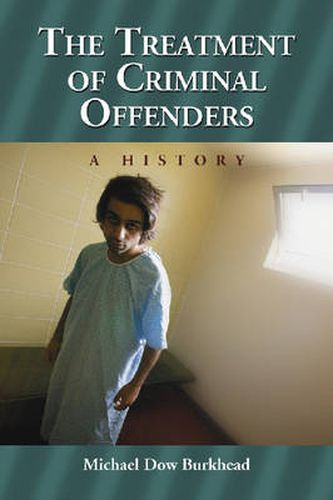Readings Newsletter
Become a Readings Member to make your shopping experience even easier.
Sign in or sign up for free!
You’re not far away from qualifying for FREE standard shipping within Australia
You’ve qualified for FREE standard shipping within Australia
The cart is loading…






This title is printed to order. This book may have been self-published. If so, we cannot guarantee the quality of the content. In the main most books will have gone through the editing process however some may not. We therefore suggest that you be aware of this before ordering this book. If in doubt check either the author or publisher’s details as we are unable to accept any returns unless they are faulty. Please contact us if you have any questions.
As of mid-2004, American prisons and jails housed 2.1 million inmates, or one out of every 138 people in the United States. When these prisoners are released, the majority will be arrested for a felony or serious misdemeanor within three years. Clearly, the prison system fails to rehabilitate many offenders. But of the various methods proposed for rehabilitation, which have proved most successful, and which treatments look most promising for the future? This discussion of the treatment of criminal offenders explores the various trends in public opinion that influence crime prevention efforts, create public policy and reform criminal law. The work discusses three core issues in the study of punishment: the role of free will and determination; the search for the root cause or causes of crime; and the effects of studying crimes versus studying criminals. It provides a brief history of the American prison, highlighting the continuous debate regarding the rehabilitation and punishment of criminals. Additional topics include the history of biologically and psychologically based treatments; the principles of effective intervention; and what lies ahead in the 21st century.
$9.00 standard shipping within Australia
FREE standard shipping within Australia for orders over $100.00
Express & International shipping calculated at checkout
This title is printed to order. This book may have been self-published. If so, we cannot guarantee the quality of the content. In the main most books will have gone through the editing process however some may not. We therefore suggest that you be aware of this before ordering this book. If in doubt check either the author or publisher’s details as we are unable to accept any returns unless they are faulty. Please contact us if you have any questions.
As of mid-2004, American prisons and jails housed 2.1 million inmates, or one out of every 138 people in the United States. When these prisoners are released, the majority will be arrested for a felony or serious misdemeanor within three years. Clearly, the prison system fails to rehabilitate many offenders. But of the various methods proposed for rehabilitation, which have proved most successful, and which treatments look most promising for the future? This discussion of the treatment of criminal offenders explores the various trends in public opinion that influence crime prevention efforts, create public policy and reform criminal law. The work discusses three core issues in the study of punishment: the role of free will and determination; the search for the root cause or causes of crime; and the effects of studying crimes versus studying criminals. It provides a brief history of the American prison, highlighting the continuous debate regarding the rehabilitation and punishment of criminals. Additional topics include the history of biologically and psychologically based treatments; the principles of effective intervention; and what lies ahead in the 21st century.